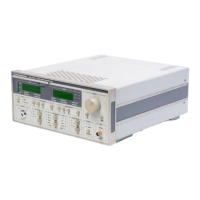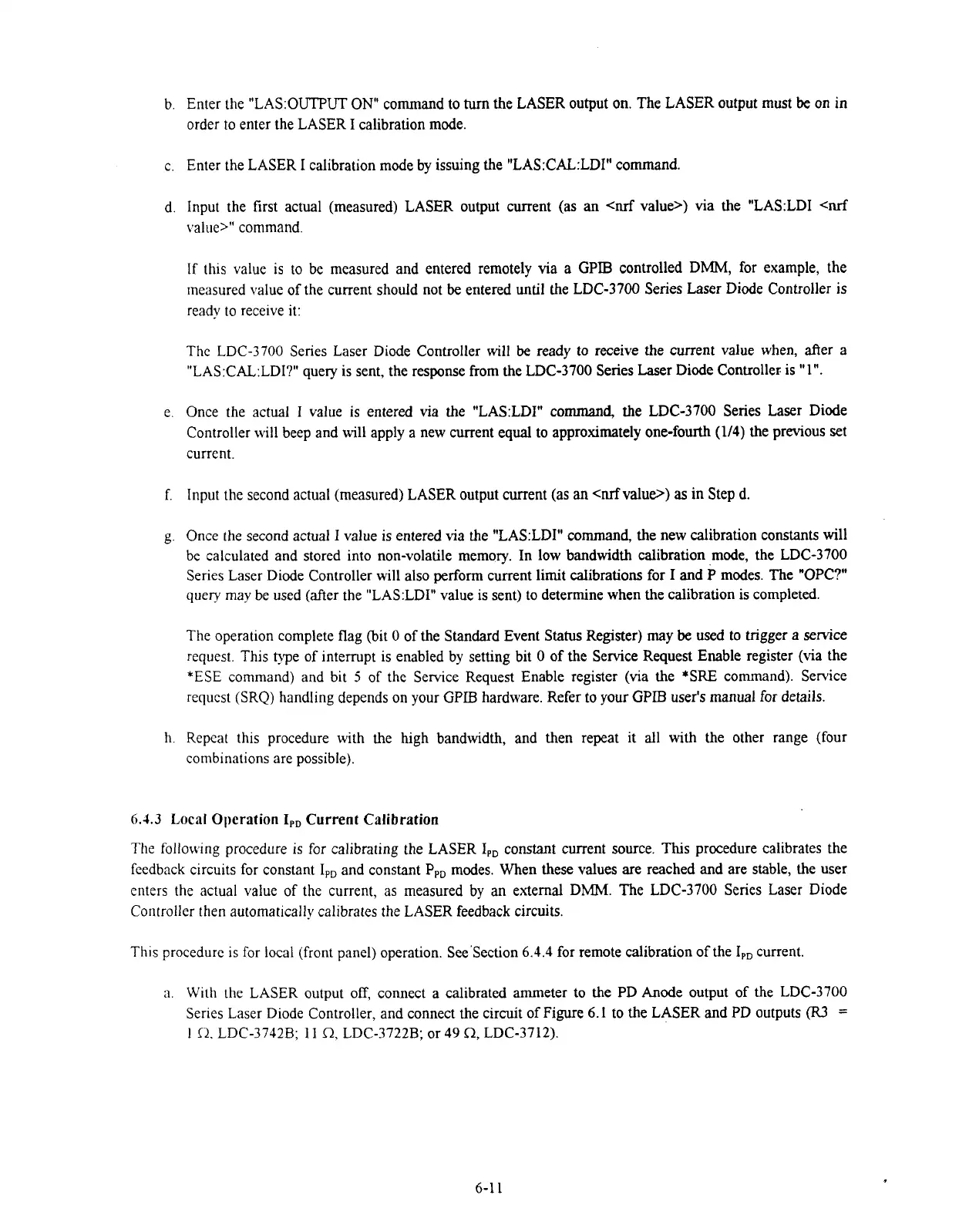b. Enter the "LAS:OUTPUT ON" command to
turn
the LASER output on. The LASER output must
be
on in
order to enter the LASER I calibration mode.
c. Enter the LASER I calibration mode by issuing the "LAS:CAL:LDIU command.
d. Input the first actual (measured) LASER output current (as an
<nrf
value) via the "LAS:LDI
<nrf
value>" command.
If this value is to be measured and entered remotely via a
GPIB
controlled DMM, for example, the
measured value of the current should not
be
entered until the LDC-3700 Series Laser Diode Controller is
ready to receive it:
Thc LDC-3700 Series Laser Diode Controller will
be
ready to receive
the
current value when, after a
"LAS:CAL:LDI?" query is sent, the response from the LDC-3700 Series Laser Diode Controller is
"1".
e. Once the actual I value is entered via the "LAS:LDIW command, the LDC-3700 Series Laser Diode
Controller will beep and will apply a new current equal to approximately one-fourth
(114)
the previous set
current.
f. Input the second actual (measured) LASER output current (as
an
<nrf
value)
as
in Step d.
g.
Once the second actual
I
value is entered via the "LAS:LDIW command, the new calibration constants will
be calculated and stored into non-volatile memory. In low bandwidth calibration mode, the LDC-3700
Series Laser Diode Controller will also perform current limit calibrations for I and
P
modes. The "OPC?"
query may be used (after the "LAS:LDIW value is sent) to determine when the calibration is completed.
The operation complete flag (bit 0 of the Standard Event
Status
Register)
may
be
used to trigger
a
service
request. This hpe of interrupt is enabled by setting bit 0 of the Senice Request Enable register (via the
'ESE
command) and bit
5
of the Senice Request Enable register
(via
the *SRE command). Service
requcst (SRQ) handling depends on your
GPIB
hardware. Refer to your GPIB user's manual for details.
h.
Repeat this procedure with the high bandwidth, and then repeat it all with the other range (four
combinations are possible).
6.1.3
Local
0l)eration
I,,
Current Calibration
The following procedure is for calibrating the LASER I,, constant current source. This procedure calibrates the
feedback circuits for constant I,, and constant
P,,
modes. When these values are reached and are stable, the user
enters the actual value of the current, as measured by an external DMM. The LDC-3700 Series Laser Diode
Controller then automatically calibrates the LASER feedback circuits.
This procedure is for local (front panel) operation. See'Section
6.4.4
for remote calibration of the I,, current.
a. With the LASER output off, connect a calibrated ammeter to the PD
Anode
output of the LDC-3700
Series Laser Diode Controller, and connect the circuit of Figure
6.1
to the LASER and PD outputs
(R3
=
1
n.
LDC-3742B;
11
0,
LDC-3722B; or
49
Q,
LDC-3712).
Artisan Technology Group - Quality Instrumentation ... Guaranteed | (888) 88-SOURCE | www.artisantg.com

